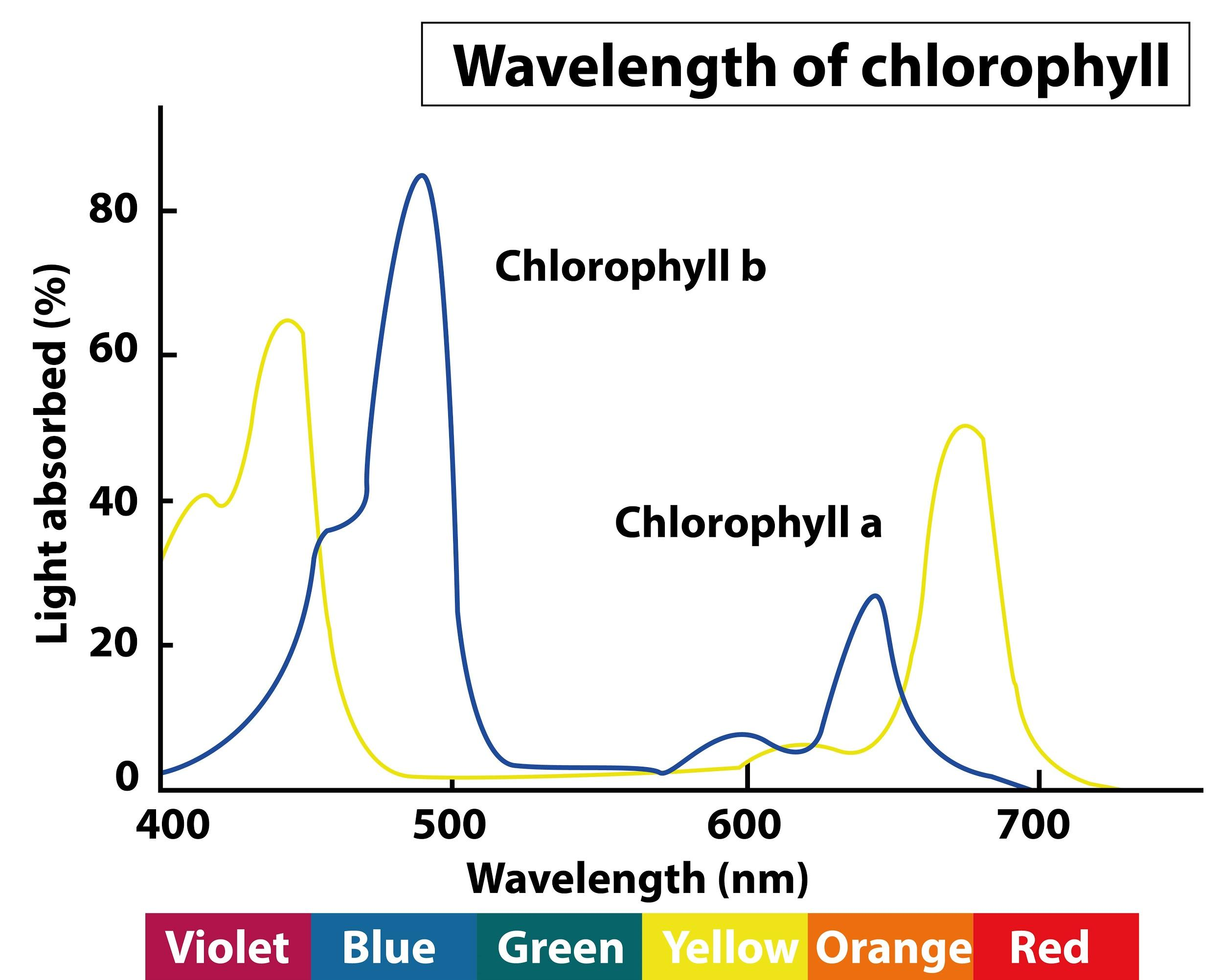
Chlorophylls absorbs visible light of wavelength
(a) 400 - 500 nm only
(b) 300 - 400 nm only
(c) 600 - 800nm only
(d) 400 - 500 nm and 600 - 700 nm
Answer
483k+ views
Hint: Chlorophyll absorbs the wavelength of both blue and red regions of VIBGYOR. Plants reflect the green region of the visible light spectrum and thus appear green in color.
Complete Step by Step Answer: The different chlorophyll pigments absorb light at specific wavelengths. The action spectrum of photosynthesis corresponds closely to the absorption spectra of chlorophyll, showing that chlorophyll is the chief pigment associated with photosynthesis. This graph together shows that most of the photosynthesis takes place in the blue and red region of the spectrum which ranges from 400 - 500 nm and 600 - 700 nm respectively. Thus, the maximum photosynthesis occurs in the blue and red regions.

Additional Information: Chromatographic separation of the leaf pigment shows that the color of leaves is due to four pigments: - Chlorophyll a- Bright green in the chromatogram - Chlorophyll b- Yellow-green - Xanthophyll- Yellow - Carotene –Yellow to yellow- orange
Chlorophyll pigments - Chlorophyll has a tadpole- like structure. It consists of a porphyrin head and a phytol tail. Porphyrin head: All chlorophylls have a complex ring structure chemically related to the porphyrin- like group of hemoglobin and cytochromes. Phytol tail: A long hydrocarbon tail is almost always attached to the ring structure. It anchors the chlorophyll to the hydrophobic portions of the thylakoid.
Accessory pigments: They absorb light of different wavelengths and transfer the energy to the chlorophyll molecules; thus, they are also called antenna molecules. Carotenoids protect plants from excessive heat and prevent photo- oxidation of chlorophyll pigments. Thus, they are called “Shield Pigments”.
So, the correct answer is, '(d) 400 - 500 nm and 600 - 700 nm'
Note: - Of all these pigments the primary photosynthetic pigment is chlorophyll a. - All pigments other than chlorophyll are called accessory pigment. - Some photosynthesis does take place at the other wavelengths of the visible spectrum. - In PS- I, the reaction center chlorophyll a has an absorption peak at 700 nm, hence called as ${ P }_{ 700 }$, while in PS- II, the reaction center has an absorption is maximum at 680 nm and is called ${ P }_{ 680}$.
Recently Updated Pages
The correct geometry and hybridization for XeF4 are class 11 chemistry CBSE

Water softening by Clarks process uses ACalcium bicarbonate class 11 chemistry CBSE

With reference to graphite and diamond which of the class 11 chemistry CBSE

A certain household has consumed 250 units of energy class 11 physics CBSE

The lightest metal known is A beryllium B lithium C class 11 chemistry CBSE

What is the formula mass of the iodine molecule class 11 chemistry CBSE

Trending doubts
Why was the Vernacular Press Act passed by British class 11 social science CBSE

Arrange Water ethanol and phenol in increasing order class 11 chemistry CBSE

Name the nuclear plant located in Uttar Pradesh class 11 social science CBSE

What steps did the French revolutionaries take to create class 11 social science CBSE

How did silk routes link the world Explain with three class 11 social science CBSE

What are the various challenges faced by political class 11 social science CBSE




